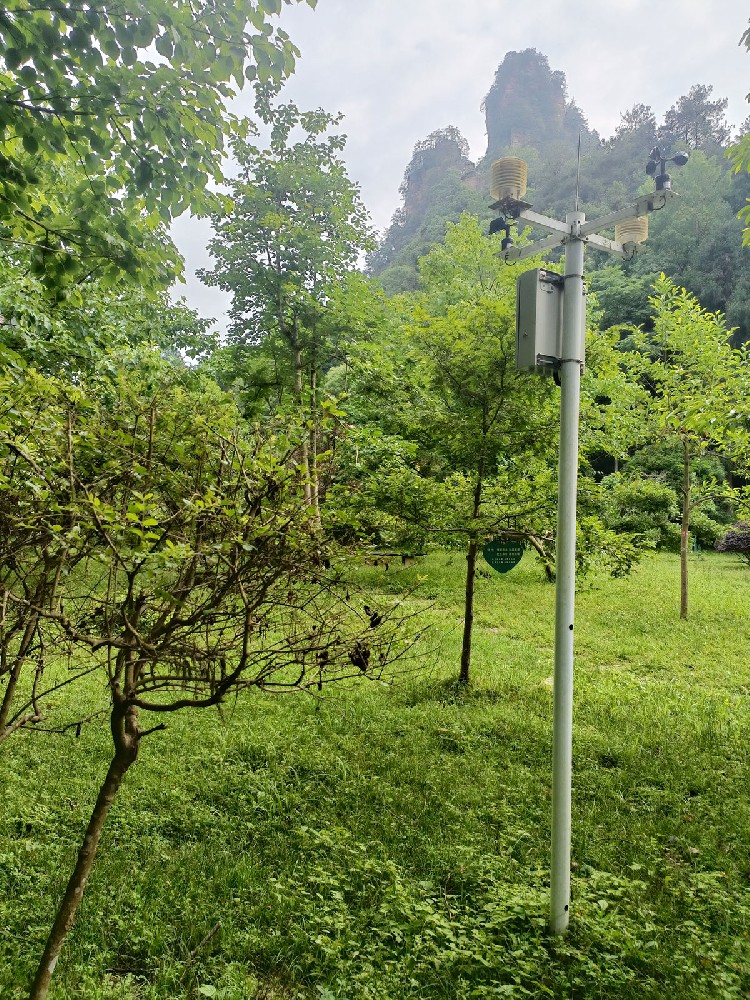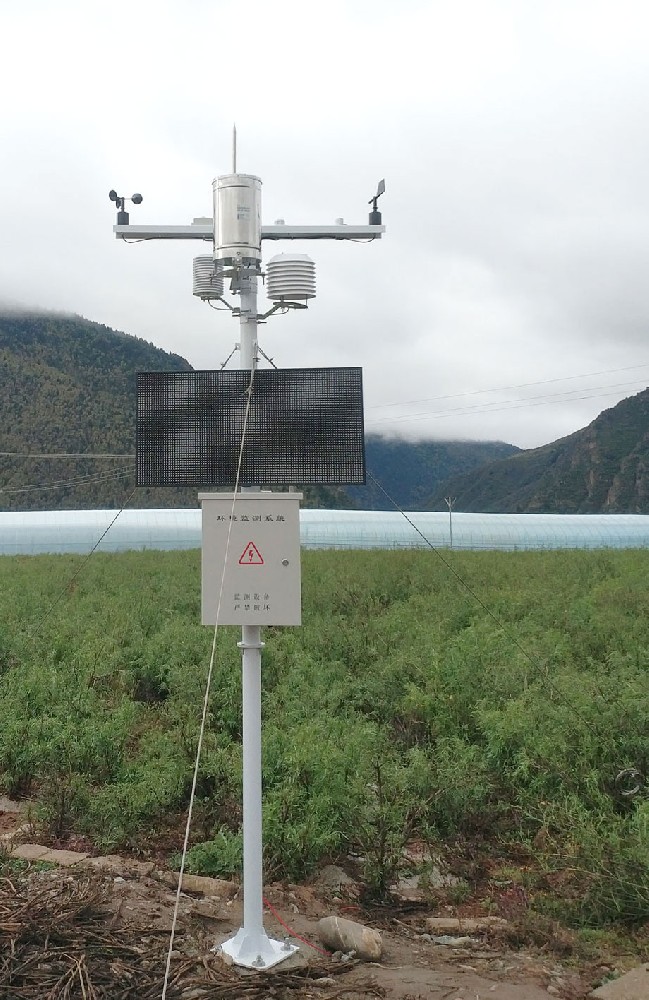

— Blogs —
—Products—
 Consumer hotline +8618073152920
Consumer hotline +8618073152920 WhatsApp:+8615367865107
Address:Room 102, District D, Houhu Industrial Park, Yuelu District, Changsha City, Hunan Province, China
Product knowledge
Time:2025-10-24 17:39:07 Popularity:448
As climate change intensifies and demand for agricultural products surges, global agriculture is shifting from "experience-based planting" to "data-driven" practices. Smart Farming is no longer a futuristic concept but an industry consensus today.
At the heart of this revolution, multi-parameter weather stations are emerging as the "neural hub" of precision agriculture—they not only monitor weather but also connect in real-time to the cloud, providing farmers with actionable decision-making data.
According to MarketsandMarkets' 2025 report, the global smart agriculture market will exceed $250 billion, with weather and environmental monitoring equipment accounting for over 35%. Within this, multi-parameter weather stations are growing at an annual rate of 18%.
Traditional agriculture relies on experience and periodic weather information, where farmers typically judge irrigation, fertilization, and planting timings through visual inspection or historical data. However, climate uncertainty and frequent extreme weather events have amplified the risks of this approach.
The core shift in smart farming lies in "real-time data" and "intelligent decision-making."
With multi-parameter weather stations, farmers can monitor the following key indicators in the field in real-time:
- Air temperature and humidity: Affecting crop transpiration and pest/disease risks;
- Rainfall amount and intensity: Guiding irrigation and drainage decisions;
- Wind speed and direction: Optimizing spray irrigation and preventing pesticide drift;
- Solar radiation and light intensity: Assisting photosynthesis and crop growth assessment;
- Atmospheric pressure and dew point temperature: Predicting local weather trends;
- Soil temperature and humidity, conductivity, pH value: Evaluating soil fertility and crop root environment.
These data are uploaded in real-time to cloud platforms via LoRa, NB-IoT, 4G/5G, or WiFi modules. The platform systems combine historical climate models for trend forecasting, enabling "automated and intelligent planting."
As noted in the FAO 2024 Agricultural Digitalization Report: "The core of future agricultural competition is no longer land and labor, but the comprehensive capabilities of weather and data."

Unlike traditional single sensors, multi-parameter weather stations integrate multiple key sensing modules into one device, achieving synchronized monitoring of the entire environment.
- Data Consistency: Collecting multiple weather data from the same sampling point, reducing spatial errors.
- High Integration Design: Unified structure for wind speed, temperature/humidity, rainfall, light, radiation, etc., making installation and maintenance more convenient.
- AI-Assisted Analysis: Combined with cloud algorithms, it can predict agricultural disasters such as frost, heavy rain, and heat damage.
- Energy Efficiency and Independent Operation: Powered by solar + battery, enabling long-term self-sustaining operation in remote areas.
- Openness and Interconnectivity: Compatible with MODBUS, LoRa, MQTT, and other protocols, easily integrating into agricultural IoT platforms.
For example, NiuBoL's NBL-W-10GUWS multi-parameter weather station can collect 10 weather elements in real-time—Wind speed, Wind direction, Temperature, Humidity, Air pressure, Rainfall, PM2.5, PM10, Noise, Radiation or illuminance—providing farm managers with a complete decision chain of "alerts + recommendations."
In modern smart farming, the value of weather data lies not just in "collection," but in "insights."
The addition of AI technology transforms multi-parameter weather stations from "information terminals" into "decision brains."
- Data Access: Weather stations securely upload via MQTT to IoT Core;
- Data Processing: Edge computing identifies anomalous data;
- AI Analysis: Models predict evaporation and rainfall probability for the next 48 hours;
- Automated Decision-Making: Through control gateways, it enables smart irrigation, greenhouse ventilation, and fertilization control.
This "edge-edge-cloud" structure has become the new paradigm in smart agriculture.
McKinsey research shows that farms integrated with AI + IoT systems can achieve average water savings of 35%, fertilizer usage reduction of 25%, and crop yield increases of 15%–20%.

Ordinary weather stations can only monitor 1–3 parameters, while multi-parameter weather stations synchronously collect over 10 indicators, making them more suitable for agricultural microclimate monitoring.
NiuBoL multi-parameter weather stations support multiple communication methods like LoRa, 4G, and WiFi, ensuring stable operation even in mountainous or remote areas.
It supports standard MQTT, HTTP, and MODBUS protocols, seamlessly docking with platforms like Azure and ThingsBoard.
As a professional provider of agricultural IoT and weather monitoring equipment, NiuBoL is committed to delivering end-to-end smart weather solutions for agricultural producers.
- NBL-W series multi-parameter weather stations: Fully automated data collection with solar power support;
- NBL-S series soil sensors: Precise measurement of soil moisture, temperature, conductivity, salinity, and pH;
- NiuBoL IoT cloud platform: Supporting multi-language, multi-region, and multi-terminal visualization.
By integrating weather, soil, and crop growth data, we help farm owners achieve closed-loop management "from monitoring to decision-making."
Whether you manage vineyards, orchards, greenhouses, or large-scale farms, NiuBoL provides one-stop smart agriculture solutions.
The rise of multi-parameter weather stations marks agriculture's leap from "weather dependency" to the "data-driven" era. It not only enhances production efficiency but also makes climate risks manageable and resource utilization more precise. Empowered by AI and IoT technologies, weather monitoring devices are upgrading from mere "sensing tools" to the "smart agriculture hub.
Over the next five years, the core of smart farming competition will shift from equipment pricing to data quality and system integration capabilities. NiuBoL will continue to provide the most competitive smart weather solutions for global agricultural customers with innovative technologies, reliable hardware, and intelligent cloud platforms.
Because we understand agriculture, we understand sensing even better. NiuBoL—Your Trusted Partner in Smart Farming.
Visit www.niubol.com
Explore more application scenarios for NiuBoL multi-parameter weather stations, or contact our technical advisors for customized solutions. Let data and weather create sustained growth value for your farm.
Prev:What Is an Ambient Weather Station?
Next:Market Forecast: Demand for Soil Moisture Sensors 2025–2030
Related recommendations
Sensors & Weather Stations Catalog
Agriculture Sensors and Weather Stations Catalog-NiuBoL.pdf
Weather Stations Catalog-NiuBoL.pdf
Related products
 Combined air temperature and relative humidity sensor
Combined air temperature and relative humidity sensor Soil Moisture Temperature sensor for irrigation
Soil Moisture Temperature sensor for irrigation Soil pH sensor RS485 soil Testing instrument soil ph meter for agriculture
Soil pH sensor RS485 soil Testing instrument soil ph meter for agriculture Wind Speed sensor Output Modbus/RS485/Analog/0-5V/4-20mA
Wind Speed sensor Output Modbus/RS485/Analog/0-5V/4-20mA Tipping bucket rain gauge for weather monitoring auto rainfall sensor RS485/Outdoor/stainless steel
Tipping bucket rain gauge for weather monitoring auto rainfall sensor RS485/Outdoor/stainless steel Pyranometer Solar Radiation Sensor 4-20mA/RS485
Pyranometer Solar Radiation Sensor 4-20mA/RS485
Screenshot, WhatsApp to identify the QR code
WhatsApp number:+8615367865107
(Click on WhatsApp to copy and add friends)
